Do you know how to save your losing stock trades using options?
Today SlashTraders will show you how to sell Covered Calls to hedge against your stocks. So you can earn a premium from selling options to reduce the cost basis of your stocks.
Even though Covered Call is the first strategy to learn about options trading, we share a few disadvantages of Covered Calls. So you know when not to trade Covered Calls.
Contents
What Is a Covered Call?
A Covered Call is an options trading strategy that hedges against a long stock position by selling OTM Call to collect a premium if the stock price doesn't rise.
Let's review the profit analysis of buying stocks. A long stock position has a 50% chance of profit. We profit when the price rises and lose when the price falls.
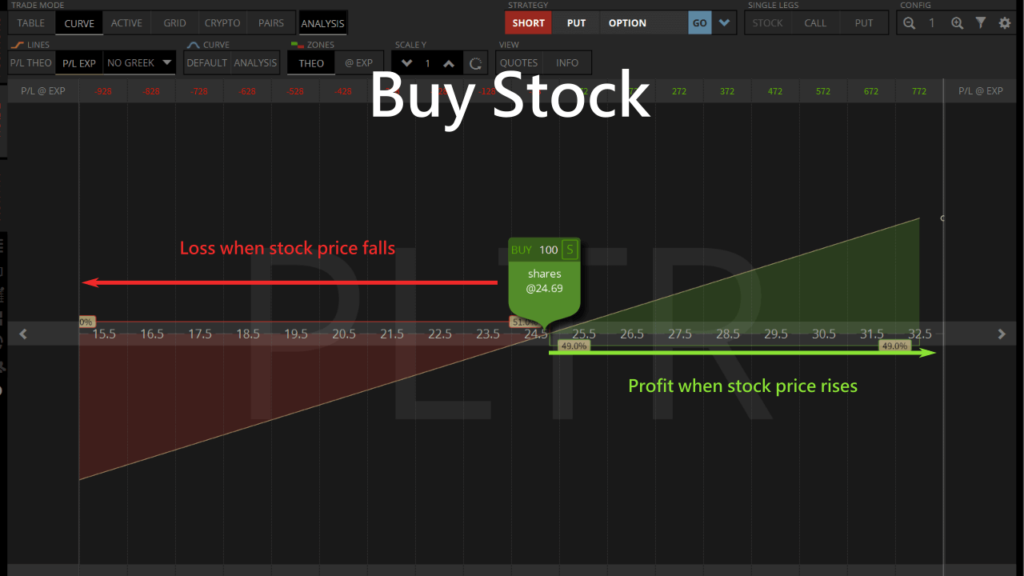
Selling an OTM Call option collects a premium. If the stock price does not increase past the strike price before expiration, the option contract expires worthless and we keep all the premium.
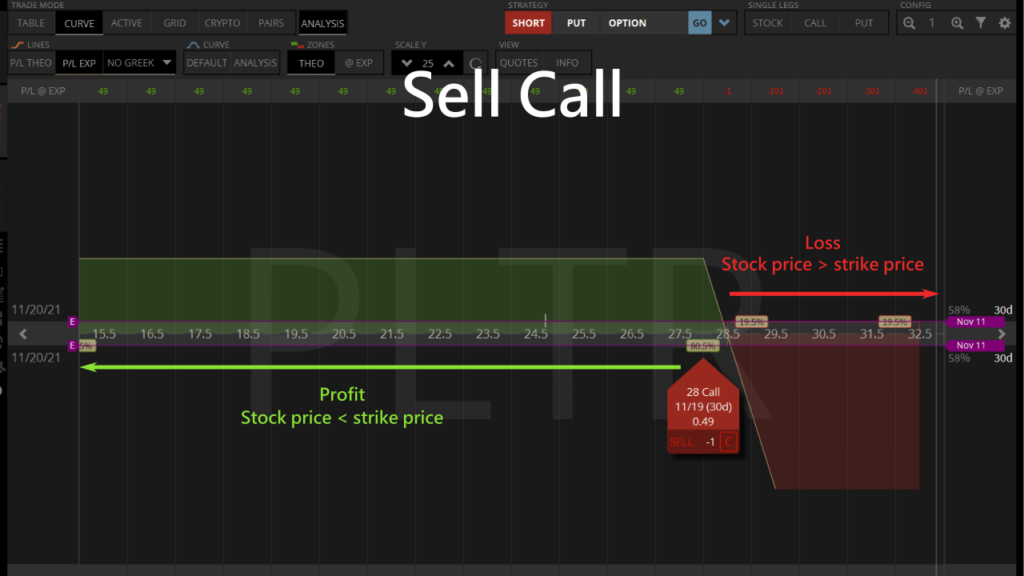
But if the stock price increases past the strike price, the maximum loss can be unlimited.
When we combine buying 100 stocks with selling a Call option, we get a Covered Call strategy. The premium received from the short Call can reduce the cost of the stocks, and increase your chance of profit.
If the stock price increases past the Call strike before expiration, the 100 stocks will be sold at the strike price for a profit to compensate for the loss of the Call trade.
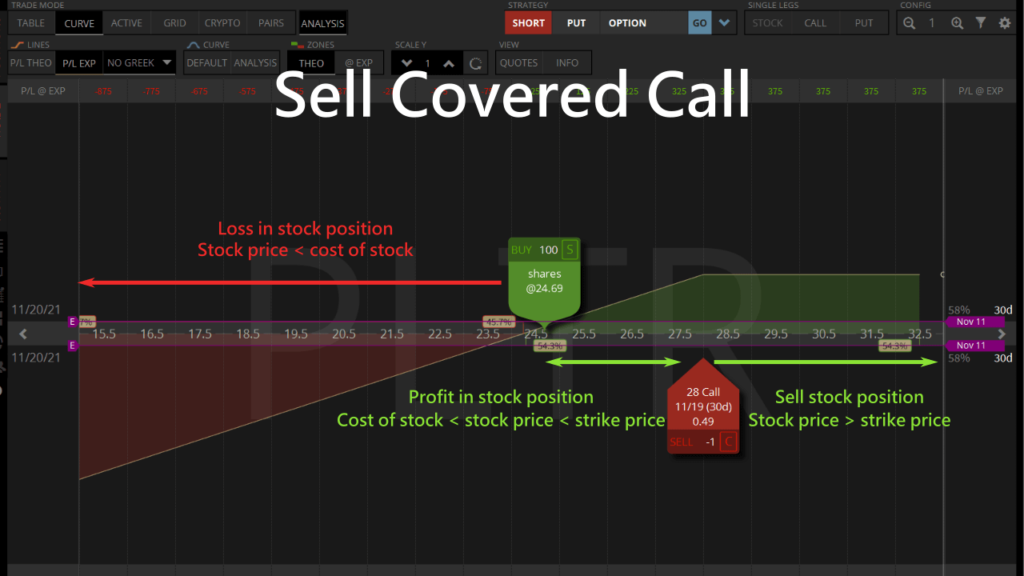
So a Covered Call caps the future upside of the stocks in exchange for the income from selling options.
Why Sell Covered Calls?
If we want to hold onto a stock for the long-term, but are afraid of a bearish trend, we can trade the Covered Call to hedge our position.
PLTR is one of the most popular stocks on the market. Since its $9 at IPO, it quickly rose to $45, before falling back to the current $24.
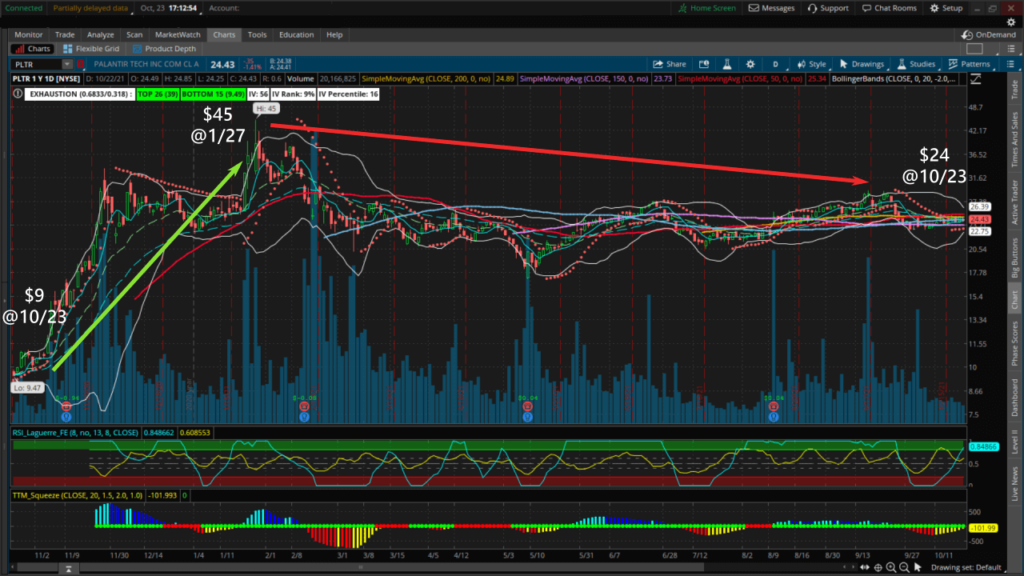
If we purchased 100 PLTR stocks at $45, we would have a losing position now. So we can trade the Covered Call to hedge and collect income while waiting for the stock to rise.
A 0.20 delta short Call at $28 that expires next month can receive $49.
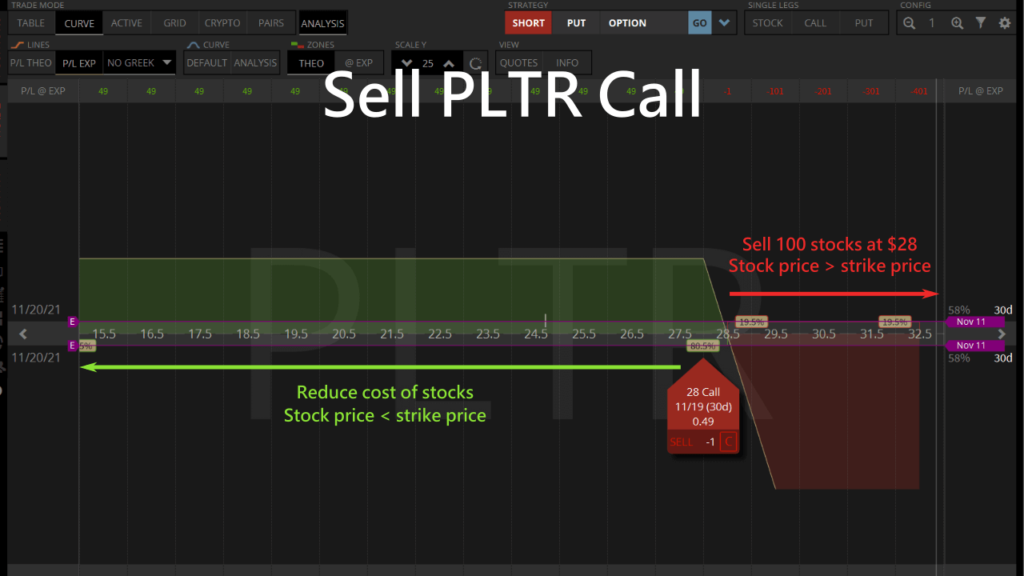
But if the stock price rises past $28 before expiration, our 100 stocks will be Called away at $28 for a loss.
If the stock price doesn't rise beyond $28, the Call option would expire worthless. Then the cost of our 100 PLTR stocks would be offset by $49 to become $4,451. Reducing the cost of each stock to $44.51.
The cost per share will continue to drop as you sell Covered Calls.
| Time | Cost of trade | Cost per share |
|---|---|---|
| 30 days | $4,451 | $44.51 |
| 60 days | $4,402 | $44.02 |
| 90 days | $4,353 | $43.53 |
| 120 days | $4,304 | $43.04 |
You may notice that if we want to make sure we profit from the trade, we need to sell a Covered Call at $45 or higher. This way if the stock price rises past the Call strike, we break even from selling the stocks.
But we find a $45 short Call has only 0.01 delta, so the premium received is extremely low at $3.
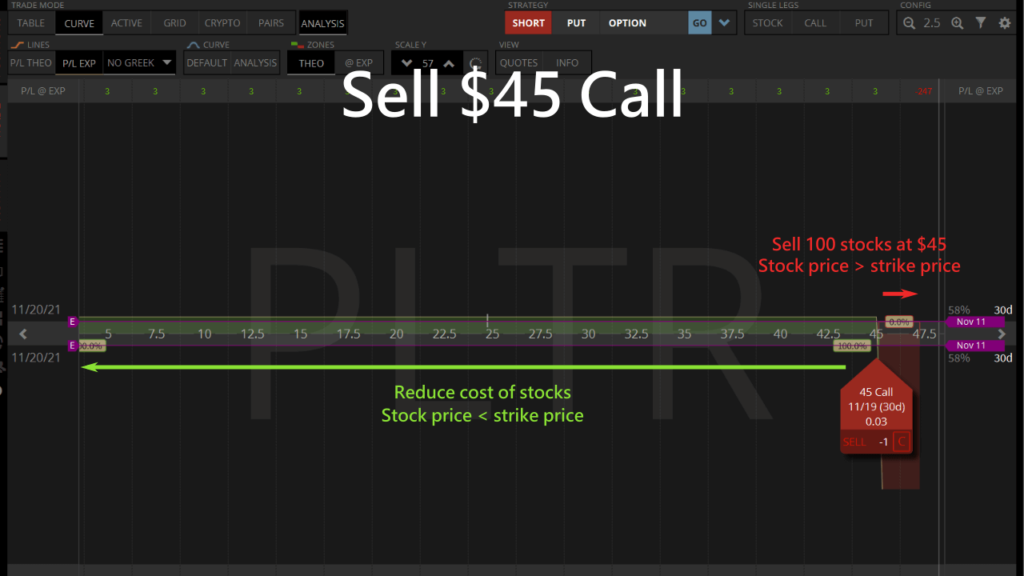
Therefore the trick to trading Covered Call on stocks is to find a high delta strike price that gives us a good premium without being breached before expiration.

3 Reasons Why We Don’t Sell Covered Calls
Even though the Covered Call is a key part of the Wheel Strategy, but there are 3 key reasons that we don't like to trade Covered Calls:
- A Covered Call requires too much capital and has very low returns.
- Good dividend stocks usually have poor option premiums.
- Covered Calls can miss out on sudden bullish trends of growth stocks.
1. A Covered Call Requires Too Much Capital and Has Very Low Returns
We can see the Covered Call requires the purchase of 100 stocks, which requires around $2,400 of capital investment.
While an ATM Bull Put Spread only requires $51 of Buying Power.
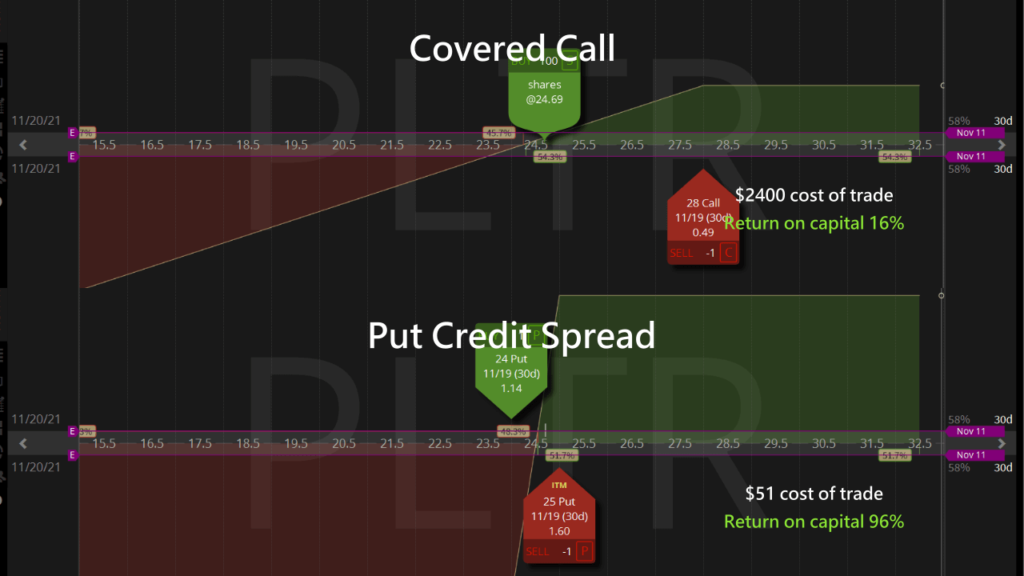
Despite both expiring in 30 days, the maximum return of a Covered Call strategy is 16% while the ATM Bull Put Spread has 96% return.
Then the annualised return of Covered Calls is 192%, while the ATM Put Spread's annual return is 1,152%.
| Strategies | Maximum monthly return | Maximum annual return |
|---|---|---|
| Covered Call | 16% | 192% |
| ATM Put Vertical Spread | 96% | 1,152% |
So there is an opportunity cost of using so much capital to trade Covered Calls for a low return. We recommend trading Poor Man's Covered Calls instead.
2. Good Dividend Stocks Usually Have Poor Option Premiums
Dividend stocks are poor candidates for trading Covered Calls, since dividend stocks or ETFs have lower IV, and therefore receive a lower premium from the Call options.
For example, trading a Covered Call for SPY at 0.20 delta would have a very low strike price, leading to a maximum return of 2.9%.
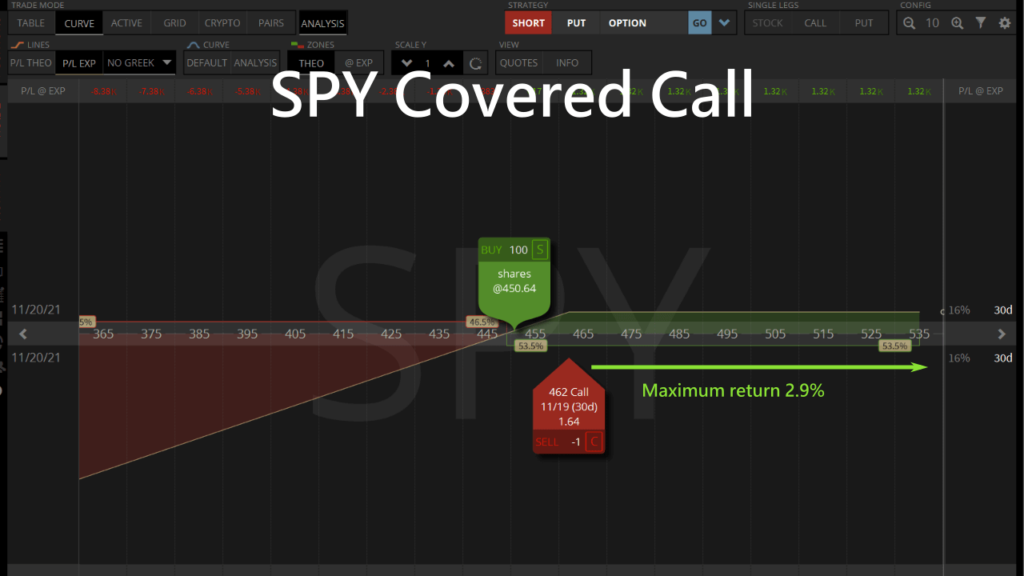
A better strategy is to buy and hold high dividend yield stocks to generate consistent dividend income for early retirement.
3. Covered Calls Can Miss Out on Sudden Bullish Trends of Growth Stocks
If we try selling Covered Calls on a high IV growth stock like TSLA, a 0.20 delta Covered Call has a maximum return of 11%.
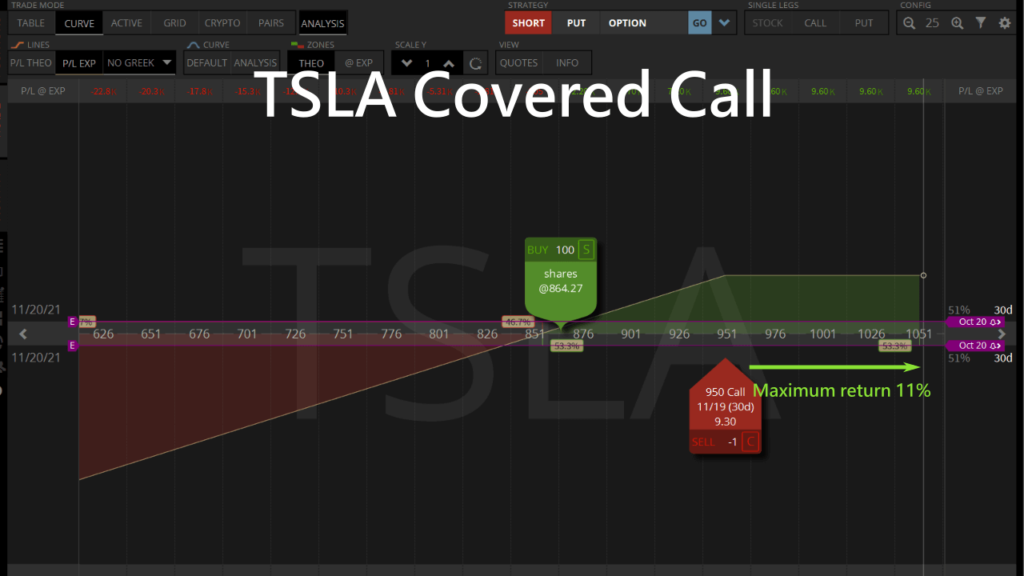
The strike price also gives us around $86 of upside potential.
Which looks good at first, until we realise that TSLA would experience bullish trends that gained $100 in 30 days. Such price bursts actually happened three times in the last year. If we traded Covered Calls for TSLA in the past year, we would have missed the big gains.
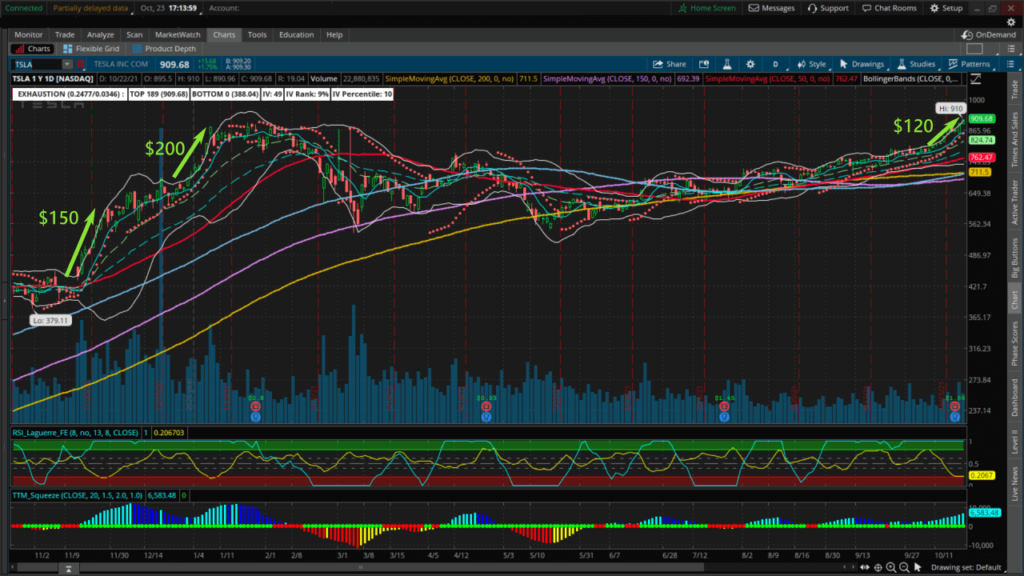
A better way to trade growth stocks is to anticipate bottom out signals and trade Bull Put Spreads.
Best Covered Call Opportunity Right Now
We use the Best Value Stock list to find financially sound, but heavily undervalued companies to sell Covered Call with. Currently the best opportunity is PRGO:
- Fundamental analysis shows the stock has 43% upside.
- Dividend yield of 2.56% per year.
- Long Signal Days shows the stock bottomed out 51 days ago.
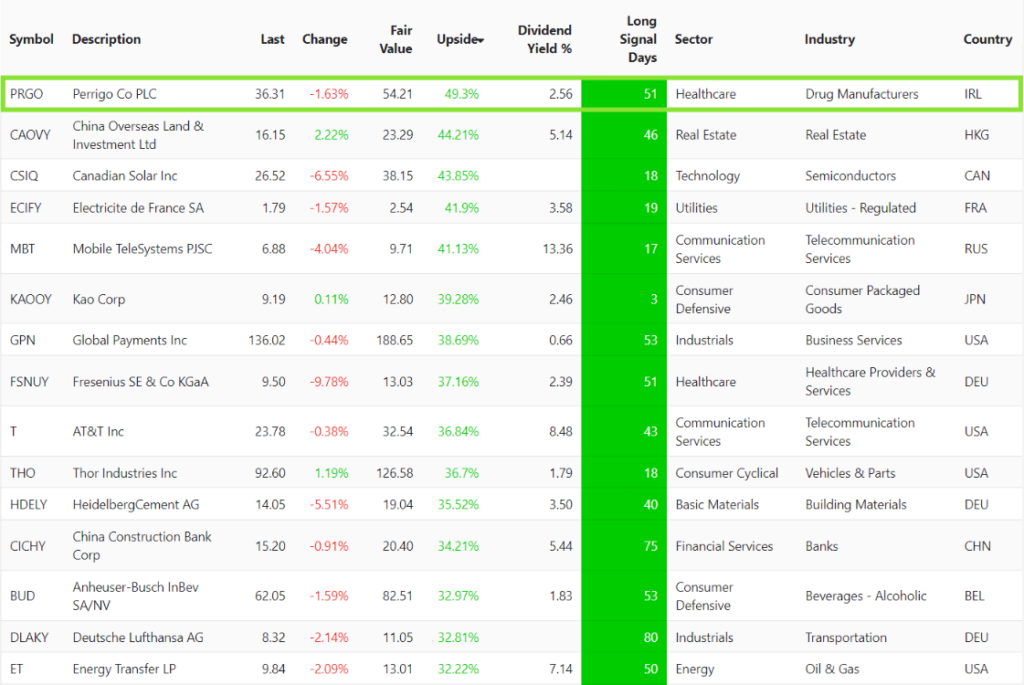
A PRGO Covered Call trade needs to combine purchasing 100 stocks and selling a Call that expires in 50 days. The trade earns us $35 in premium.
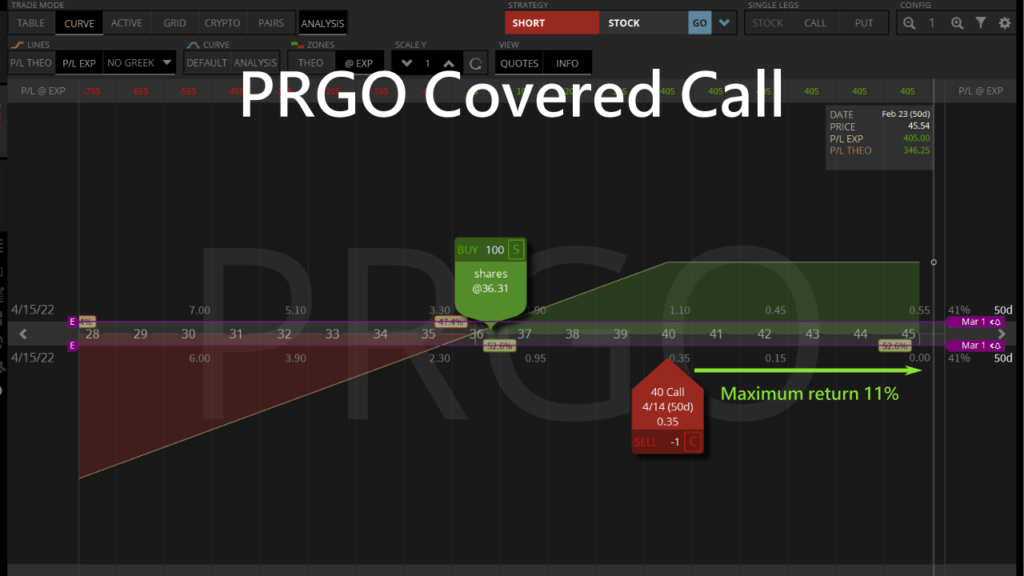
If the PRGO stock price does not exceed $40, we can keep the premium collected to improve on the buy-and-hold annual dividend yield of 2.56%. In case PRGO rises past the $40 strike price, we earn a maximum return of 11%.
Now you know the basics of trading Covered Calls. You can see despite the low-risk trade, the cost of each trade is very high, has low returns, and we can miss out on big price gains.
So we don't usually trade Covered Calls in SlashTraders' live trading account.
But you can still use the Bullish Value Stocks to find great Covered Calls to trade.
Trending Articles
- What Are Options Contracts and How Do They Work?
- Options Wheel Strategy to 3x Your S&P 500 ETF Return
- 3 Things We Hate About Selling Covered Calls
- How to Setup Your Telegram Username? Get Real-Time Trade Alerts
- How to Roll Options to Repair Losing Trades
- Complete Guide to Delta Hedging to Protect Your Portfolio
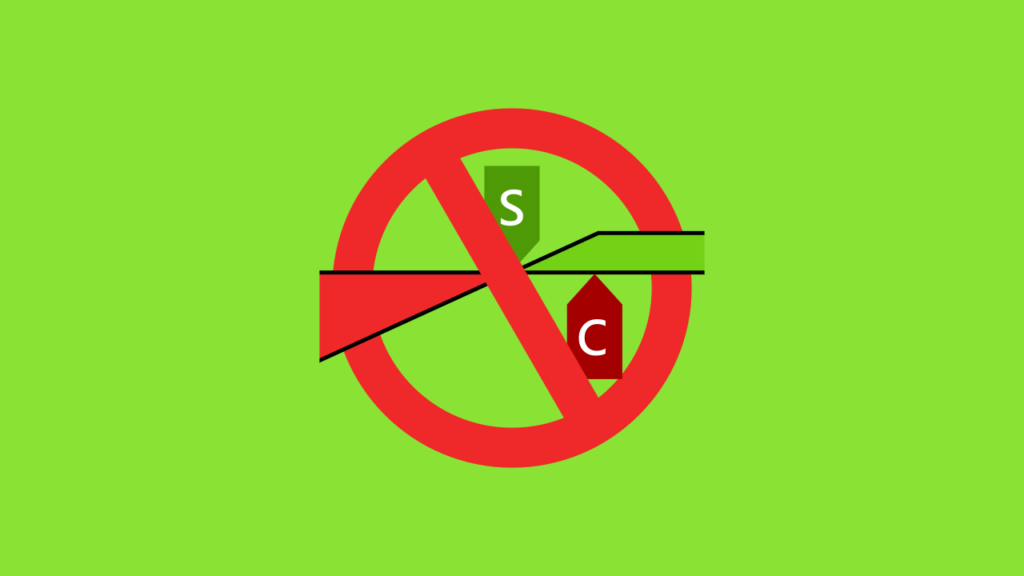
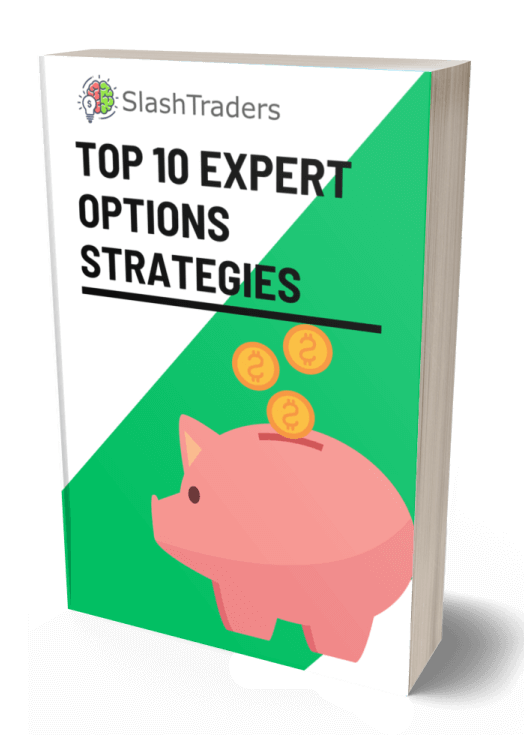
Hey, thank you very much for writing an article about the disadvantages of covered calls, I’ve just realized that you get small gains. So, I would love to know what are the best strategies that you always suggest?
For bullish opportunities we would sell ATM Put spreads, as they have higher credits and use lower buying power.
For bearish trades, we sell ATM Call spreads for the same reason.
For neutral trades, we usually sell 0.20 delta Strangles because they are easier to roll forward in the event of a loss.
Thanks! this means a lot.
Covered calls are still a much safer bet, than just selling naked call options. Naked call options are very dangerous when they expire in the money.
Yes, Covered Call is a great alternative to the buy-and-hold strategy.
说的有道理, 但是也要看每个人的投资习惯是保守还是激进。垂直价差虽然说利润不菲但是也要交保证金给券商, 也要承担股价如果击穿的巨大风险。个人感觉对于刚接触期权的人来说covered call上手最快也最安全,如果对自己的风险管控有信心可以选择更激进的期权策略。
没错
熟悉多个交易策略可在不同的情况下使用
你說的沒錯
Covered call雖然風險不高,但真的沒有想像的好用!
同意
Now I think about it, cover call options do have the disadvantages you mentioned
I’ll be more careful about trading covered calls from now on
thanks
Thank you for a different perspective on selling covered calls
Covered calls don’t seem that great now
Yes, there seems to be more drawbacks than gains for covered calls
我經常使用sell covered call策略來增加持股的收入,謝謝您分享不同的角度看這個策略,讓我好好想想怎麼優化我的美股交易方式
在優化投資策略的過程中如果有特別的想法,希望能一同交流、學習
I was actually looking for the best covered call stocks
After reading this article, I guess I’m done with covered calls now
Thanks!
Yes, although Covered Calls are easy to execute, they have big flaws that turn us off them.
原來covered call還有這幾個缺點,謝謝分享
是啊,Covered Call理論上風險不高,可是有機會成本太高的問題
What kind of delta do you usually look at for selling covered calls?
When we trade OTM Calls or Puts, we usually start with 0.20 delta to get a good balance of premium and probability of profit.
Then we analyse the price charts again to look for support levels that we can fine-tune our strike prices.
I used to think ETFs and FAANG stocks are the best covered call stocks, because I want to hold on to them for the long term.
Thank you for sharing your perspective, I’ll rethink my covered call selling strategies.
Your welcome.
We do think short Covered Calls have huge opportunity costs.
If you want to hold on to stocks and ETFs for the long term, it’s probably better to spread out your capital across multiple stocks rather than buying 100 stocks at a time.
It helps you diversify your portfolio and manage your risks.
FAANG stocks are growth stocks and they move quite a bit. If you want to hold them for the long term, don’t sell covered calls, it will be painful when your stocks are called away and the stocks keep moving higher. My buying power is available only once at any given time and I will certainly not use it for selling covered calls due to the low return of 1-2% per month. I would rather sell put spreads with 80-100% ROC per month on FAANG stocks as long as the underlying stock is fundamentally undervalued instead of selling covered calls. If they do not expire worthless, I would roll them into the future because eventually they will expire worthless in case of FAANG stocks. It is safe to sell put spreads on undervalued FAANG stocks. Now, it is not a good time to sell put spreads on FAANG stocks because they are all overvalued or fairly valued except Amazon and Facebook (check the dividend and growth stock database for the fair values: https://slashtraders.com/en/tools/dividend-stock-screener/).
I have been trading covered calls for so long and did not realise that it has a huge opportunity cost until now!
Thank you for the great explanation.
That’s right, trading a Covered Call solely to earn a small premium to offset stocks is a big missed opportunity.